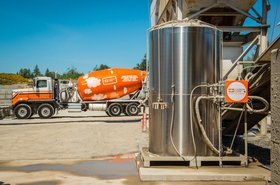A lot is currently being written about data centers and carbon. It is not difficult to find carefully worded corporate statements about carbon neutrality and data centers.
It appears that subtle claims of carbon-neutral data centers may be on the rise. But what exactly is a carbon-neutral data center? As ever, a simple definition is difficult.
For customers seeking data center capacity, the carbon economy can be too complex to navigate. To that end, informed decision making is key. That means expanding your lexicon (Takeoffs; Offsets; Carbon Credits; Whole of Life; Circular Economy; PPAs; RECs) and getting your map out or risk being lost in a labyrinth of unclear definitions and incomplete data.
Matched purchases are not a simple fix
In July 2020, the IEA (International Energy Authority) reported that Hyperscale data centre operators, in particular, are leaders in corporate renewables procurement, particularly through Power Purchase Agreements (PPAs). The study goes on to report that the top four corporate off-takers of renewables in 2019 were all ICT companies, led by Google. In 2018, Google (10TWh) and Apple 1.3TWh) purchased or generated enough renewable electricity to match 100 percent of their data centre energy consumption." Moreover, IEA noted that Facebook consumed 3.2TWh (92 percent renewables) and said Amazon and Microsoft sourced around half of their data center electricity from renewables.
But even while welcoming this impressive data, the IEA sounds a note of caution in taking data at face value: "While these achievements are impressive, matching 100 percent of annual demand with renewable energy purchases or certificates does not guarantee that data centers are actually 100 percent powered by renewable sources all the time. Data center operators investing in renewable energy, working with electricity utilities, regulators and project developers, should seek to identify projects that maximize benefits for the local grid and also reduce overall GHG emissions."
According to Powerhub.com, PPAs are a very effective and popular way to address carbon emissions. But, they are not a simple fix, and investing in PPAs doesn't always tell the whole story. PPAs may involve RECs (renewable energy credits) where the energy being used may actually come from traditional 'dirty' sources. This may be unavoidable given the proximity to local power plants. A company may use RECs to offset its carbon production. These are welcome and encourage investment in renewables while not actually reducing the amount of carbon produced.
Embodied carbon
What PPAs can't address is embodied carbon. A data center is also a building; therefore is the sum of its parts, and this includes embodied carbon.
Time for another definition: The UK Green Building Council reports that "In the building life cycle embodied carbon is the Carbon Dioxide Equivalent (CO2e) or Greenhouse Gas (GHG) Emissions associated with the non-operational phase of the project." It says, "This includes emissions caused by extraction, manufacture, transportation, assembly, maintenance, replacement, deconstruction, disposal and end of life aspects of the materials and systems that make up a building. The whole life carbon of the building is both the embodied carbon and the carbon associated with operation (heating, cooling, powering, providing water etc.). Understanding the relationships between 'embodied' carbon and 'operational' carbon can assist in determining the overall optimum carbon reductions."
Is it fair to ask data center operators about their newly built data centers' embodied carbon cost? As we said, this is a complex issue. Advice from inside the data center community may help. Imasons.org, a group of industry experts, advises that users include "Circular Economy principles[for] designs or purchases/leases data center resources."
It says companies should think about 'what the facility was before, and what it could be in the future.' Develop a shared ethos within your organization to shift the mindset from "new is better" to "how can we work together to fulfill our sustainability goals? Evaluate the costs and value of reusing materials and infrastructure. Sustainability objectives and business objectives aren't always diametrically opposed!"
Thankfully the industry is maturing and taking a responsible attitude. Greenwashing is no longer a major problem. Yet the only sensible approach is to get into the details and look at green and carbon neutrality claims from every relevant angle.
What is clear is that whether you are a hyperscale operator with millions of customers and billions of users with a deep understanding of global reputational risk, an enterprise with legacy infrastructure and applications that will benefit from digital transformation or a start-up with global ambitions, the time to examine carefully carbon-neutral data in order to make strides towards carbon-free operations is now.





